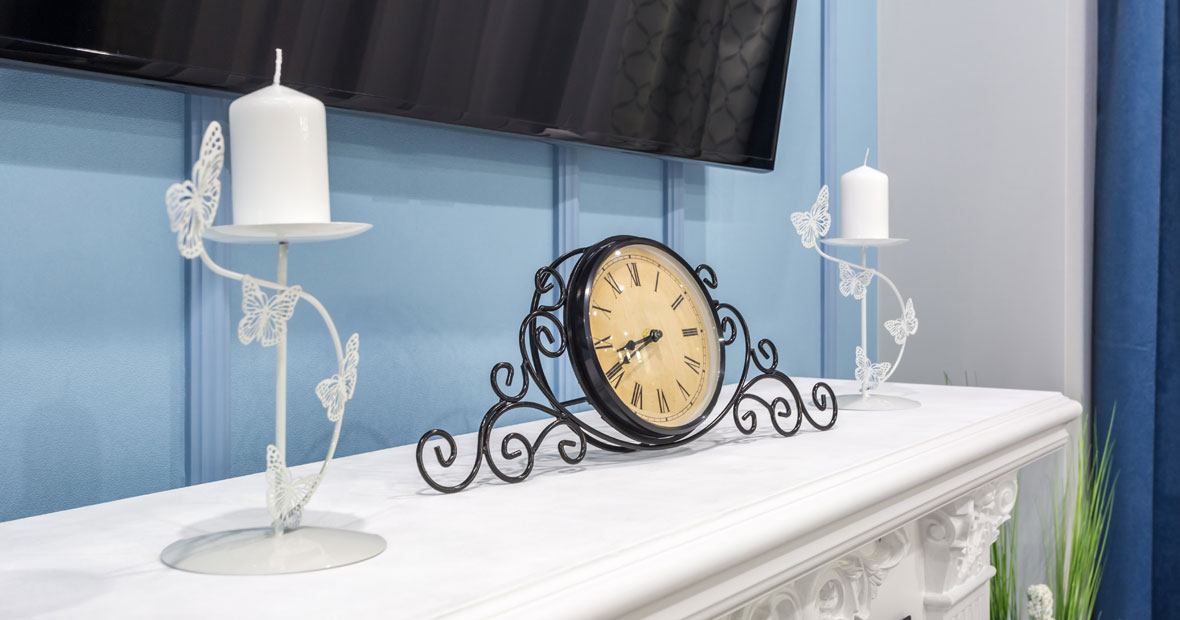
Delve into the enchanting world of mantel clocks, where each tick and tock echoes a piece of history. From their intricate mechanical movements, reminiscent of a beating heart, to their elegant designs that have evolved over centuries, these antique timepieces tell more than just time - they tell a story. The timeless allure of these vintage clocks, with their unique appeal and aesthetic charm, rival even the most modern designs. Whether perched on a mantel or displayed as a piece of art, these timepieces add a touch of elegance to any home. This journey through the world of antique timepieces will provide insight into the craftsmanship behind these pieces and the enduring appeal of retro clocks. You'll discover the differences between mechanical and quartz movements, and understand why these vintage clocks still hold a special place in the realm of timekeeping. This is the magic of mantel clocks.
Mechanical Movement: The Heart of Antique Timepieces
Understanding the intricate workings of antique timepieces requires a deep dive into the heart of the mechanism: the mechanical movement. This pivotal component, often driven by a winding spring or a weighted pendulum, is responsible for transforming stored energy into continuous, accurate timekeeping. Whether in a grandfather clock from the 18th century or a mantel clock from the Victorian era, the mechanical movement acts as the heart, maintaining the steady rhythm of time.
Antique clocks, renowned for their mechanical movements, are marvels of precision engineering. Each movement, whether regulated by a pendulum or a hand-wound spring, showcases the pinnacle of craftsmanship in its era. The interplay between gears and springs, all meticulously crafted and assembled, reflects a time when every second was a triumph of human ingenuity.
From Wall to Mantel: The Evolution of Clock Design
Tracing the lineage of clock design unveils a fascinating journey. The transition from wall to mantel clocks signalled a significant shift, embodying changes in societal norms and technological advancements. Earlier wall clocks, often large and prominent, served as more than mere timekeepers. They were integral pieces of art that adorned living spaces, reflecting the aesthetic trends of their respective eras.
Over time, the design of clocks experienced a transformation, influenced by the industrial revolution. The mass production of clocks became feasible, leading to a surge in design diversity. Clocks no longer remained confined to walls, but found their place on mantels, embodying a more personalized style.
Designing these timepieces required intricate craftsmanship. Materials commonly used ranged from wood, metal to quartz. The dial, a key element, showcased the artistic flair of the designer. Clock designs varied across cultures, reflecting their unique historical and societal changes.
Mantel clocks, in contrast to their wall counterparts, were smaller, portable, and well-suited to the interior décor. The advent of quartz technology marked another milestone in clock design, leading to the emergence of digital timepieces. Despite the digital invasion, the charm of antique clocks remains unscathed, symbolizing a blend of art, history and technology.
Antique vs Modern: The Timeless allure of Vintage Clocks
Delve into the world of clocks, where the charm of antiquity meets the convenience of modernity. A detailed guide with illustrative images will aid in discerning antique timepieces from their modern counterparts. This serves as an invaluable tool for clock enthusiasts and collectors who have a penchant for vintage clocks and their unique appeal. The enchanting charm of vintage clocks, marked by their intricate designs and meticulous craftsmanship, remains unrivaled, continuing to be coveted by many.
Classic Timekeeping: The Unique Appeal of Retro Clocks
In an era dominated by digital timekeeping, the retro clock still holds a special place among aficionados. Every vintage clock carries a story, a fragment of history that adds to its unique appeal. From the grandeur of grandfather clocks to the quaint charm of mantel clocks, each piece adds a distinctive touch to any collection.
Mechanical vs Quartz: A Look at Clock Movements
Understanding the different clock movements is central to appreciating their timeless charm. Mechanical movements, characterized by their intricate gears and springs, are a hallmark of antique clocks. On the other hand, quartz movements, powered by battery, are a staple of modern timekeeping. Despite their simplistic mechanism, they offer accuracy and reliability.
Timepiece Art: The Aesthetic Charm of Vintage Clocks
The artistic value of vintage clocks extends beyond their functionality. Their aesthetic charm, reflecting the artistic sensibilities of bygone eras, makes them coveted pieces of decor. Handpicked by discerning sellers on platforms like Etsy, these timeless pieces can transform spaces with their unique allure.
Adding a Touch of Elegance: Timepieces as Home Decor
The history of clocks and watches as interior decor elements spans centuries, with an evolution that mirrors the progress in horology and art. From grand, ornate grandfather clocks to sleek, modern wristwatches, timepieces have been integrated into home decor in myriad ways. The art of elegantly incorporating a clock or watch into a room's decor involves an understanding of design principles, an appreciation for the aesthetic value of timepieces, and a knack for creating a focal point. For a wealth of exquisite antique timepieces, do consult this website.
Current trends in interior decor with clocks and watches reflect a balance between function and style. The impact of seeing time pass in a living space can be profound, a constant reminder of life's fleeting nature. It's thus essential to choose a suitable location for a clock or watch in the home, a place where it adds a touch of elegance without becoming overwhelming. The size and scale of the timepiece can significantly impact a room's aesthetic, so it's vital to consider these aspects when adding a timepiece to a space.
